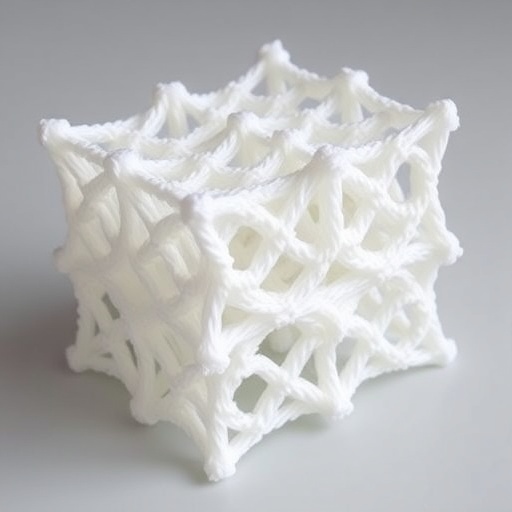PROTECT YOUR DNA WITH QUANTUM TECHNOLOGY
Orgo-Life the new way to the future Advertising by Adpathway
Tennis enthusiasts and players have long debated what truly defines the ideal racket. With varying preferences in terms of weight, balance, and string tension, not all rackets are created equal, especially when it comes to the subtle, yet crucial, feel that a player experiences through the strings and frame. New findings by researchers delve into this often-ambiguous concept of “feel” as it relates to tennis rackets, promising to reshape how players select their equipment. By examining the parameters that govern this sensation, the study aims to bridge the gap between the tactile experience of a player and the physical properties of the rackets they use.
Understanding the feel-related impact parameters of tennis rackets can be critical in enhancing performance. This recent research has approached the subject by breaking down the sensations felt during ball impact, focusing on defining these elements more rigorously. The key parameters identified will offer players a clearer framework for selecting rackets that not only suit their style of play but also optimize their physical interaction with the ball and the court. This nuanced investigation amplifies the conversation surrounding the tactile feedback that players seek from their tennis gear.
Racket feel typically refers to the feedback a player experiences upon striking a tennis ball. This feedback is often shaped by various factors, including the material composition of the frame, the string tension, and the overall design of the racket. Previous studies have hinted at these correlations, but none had attempted to define them as explicitly as this new research. Ripberger, Onder, and Plunkett spearheaded this inquiry with a comprehensive analysis that established clearer metrics for evaluating racket feel. By focusing on empirical measurements and subjective evaluations, they sought to illuminate the relationship between physical properties and player perceptions.
To investigate these feel-related impacts systematically, the researchers implemented a combination of sophisticated instrumentation and player feedback. Utilizing force sensors, they meticulously recorded the forces at play during ball impact. This high-resolution data allowed the team to quantify the sensations experienced by players, revealing a complex interplay between vibrational frequencies, dampening qualities, and frame stiffness. Interestingly, players reported feeling more connected to their racket when specific vibrations matched their preferences, highlighting the significance of personalized equipment choices.
Moreover, the findings indicate that the choice of materials in racket construction plays an undoubted role in influencing feel. Composite materials, which can range from carbon fiber to advanced polymers, exhibit distinct characteristics that resonate differently with players. Understanding the resonance frequencies and inherent vibrational dampening abilities of these materials gives manufacturers critical insights into how they can enhance feel and performance. The research implies that even small adjustments in material selection can lead to noticeable differences in how a racket performs and feels on impact, stressing the importance of tailored designs suited to individual players.
The study also highlights the importance of custom racket specifications. Players often gravitate toward equipment that matches their unique playing style, whether they prefer a heavy, stable racket for powerful serves or a lighter model for increased maneuverability. The research advocates that players should consider feel as a vital component in their selection process, arguing that a racket that feels right can enhance their confidence and performance during matches. This perspective shifts the traditional standpoint towards equipment choice, where subjective feel is now recognized alongside more quantitative aspects such as weight and balance.
As competitive sports continue to evolve, tennis is no exception. Equipment manufacturers are increasingly focusing on developing innovative technologies that cater to player preferences. This research underlines the shift towards player-centric design, urging brands to integrate feel-related aspects into their engineering processes. By emphasizing the significance of experiential elements, companies might improve their market competitiveness while simultaneously enhancing player performance and satisfaction.
Furthermore, the connection between feel and performance cannot be overstated. Many players have experienced situations where a racket feels perfect in practice but fails to deliver during a competitive match. This dichotomy often stems from inconsistencies in how feel translates into actual performance outcomes. The groundbreaking study serves as a clarion call for players and manufacturers alike to recognize that the perception of feel can directly impact one’s performance on the court. A deeper understanding of these mechanisms may ultimately lead to better player outcomes.
Additionally, the research has broader implications beyond equipment selection; it also prompts players to engage with their material properties more consciously. With the scientific community continuously discovering new materials and technologies, players are encouraged to stay informed about advancements that can enhance their game. The synthesized knowledge from such studies equips players with the ability to discern which properties align with their style, fostering a more informed tennis community.
As the findings of this study are disseminated, they are likely to spark robust discussions within the tennis community. Players may become more vigilant in evaluating how their rackets respond, leading to personalized adjustments in technique and equipment choices. This awareness could promote more tailored training methods, enhancing overall performance while instilling a stronger connection between player and racket. The ripple effect of such knowledge may even foster a new competitive edge in amateur and professional circuits alike.
In conclusion, the emerging definitions of feel-related impact parameters present a significant advancement in the world of sports engineering and tennis. As players learn to navigate the technical aspects of their equipment with greater clarity, the game may witness a new generation of athletes who understand the critical balance of feel and specifications. The trajectory of this research not only promises to deepen player engagement but also to redefine what it means to hold and swing a racket in pursuit of excellence on the court. It is an exciting time for tennis, as science and sport converge to enhance the experience and performance of players worldwide.
As we look towards the future of tennis rackets, we can anticipate innovations driven by empirical insights and player feedback. With ongoing advancements in material science and engineering, coupled with the rigorous exploration of feel-related parameters, we may soon witness a new era of tennis equipment that accounts for every player’s individual nuances and preferences. The potential for discovery in this field is boundless, and those who embrace this research may find themselves at the forefront of the next wave of tennis innovations.
Subject of Research: Feel-related impact parameters of tennis rackets and correlations with racket properties.
Article Title: Definition of feel-related impact parameters of tennis rackets and correlations with racket properties.
Article References:
Ripberger, A., Onder, Y., Plunkett, O. et al. Definition of feel-related impact parameters of tennis rackets and correlations with racket properties.
Sports Eng 28, 21 (2025). https://doi.org/10.1007/s12283-025-00502-x
Image Credits: AI Generated
DOI: 10.1007/s12283-025-00502-x
Keywords: Tennis rackets, feel-related parameters, performance, material properties, player preference, sports engineering, equipment innovation.
Tags: enhancing tennis performanceimpact parameters in tennisoptimizing tennis gearplayer equipment selectionplayer sensation during impactproperties of tennis racketsracket weight and balanceresearch on tennis equipmentstring tension effectstactile feedback in tennistennis racket feelunderstanding racket dynamics


 5 hours ago
7
5 hours ago
7





















 English (US) ·
English (US) ·  French (CA) ·
French (CA) ·